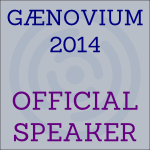Getting Things Done (GTD) - Sat, 21 Feb 2009
I always enjoy reading a good self-help book. I like to find ways to do things better and more efficiently. But it seems to me that most of the people who would best benefit from these books are the people that don’t read them.
 I’ve heard a lot recently about the book Getting Things Done: The Art of Stress-Free Productivity by David Allen, and I picked up a copy and started reading it last week.
I’ve heard a lot recently about the book Getting Things Done: The Art of Stress-Free Productivity by David Allen, and I picked up a copy and started reading it last week.
I’ve always been looking for that “perfect” ToDo list program or system. I’ve never found one that seemed to be just what I needed and I’ve tried many. These included Chandler and recently Tudumo (designed specifically for GTD) sounded promising. The beautiful and acclaimed online Remember the Milk service just didn’t seem right for me either.
But reading Getting Things Done now has clarified what was missing. Yes, it’s easy to write down your things to do in a big list, but the important thing is to write down your objectives/goals and for each one, the next action step to take. Once you do that action, you then write the next one to do until you complete your goal.
Now that sounds a lot like the way I’ve always programmed. I’ve always maintained Behold’s ToDo list publicly. Each item listed is one objective/goal. I take the next one, and I program it, step by step, each step being an action.
And now I realize what the trouble with my system (and even with GTD) is. Yes, it works to get you going and on your way to complete your objective, but doing it one action at a time leaves you with not necessarily knowing what remaining actions are required to complete your task. Almost always, you end up with more actions to do than initially expected. Some actions are harder than you expected and end up taking longer than you would have thought or may require being broken into smaller more manageable actions.
Thus explains my dilemma as to estimating when I’m going to finish each part of Behold. It is very difficult to foresee just what is involved when the step-by-step approach is taken. I could put “build a house” on my ToDo list, and start working on that action by action. How would you estimate how long that would take? Are you taking into account having to buy a tool you don’t have, or the time to order a replacement for a defective part?
Brett commented on my blog post Avoiding Tangents and asked if the next update of Behold might still be possible in March. But the step-by-step method really does not allow me to assuredly answer until it becomes obvious that there is too much to do in the time remaining.
I haven’t finished the book yet. Hopefully it will address this problem.
Many genealogy programs include a ToDo list that is supposed to help you plan your research. The ones I’ve seen I haven’t been impressed with. But the GTD technique does give a good simple framework for this. A Task/ToDo list is something I have in the “Other Interesting Ideas” section of Behold’s Future Plans and is something I ultimately want to have in Behold following Version 2.0 when I start to use Behold to record my own family information.

 Feedspot 100 Best Genealogy Blogs
Feedspot 100 Best Genealogy Blogs





